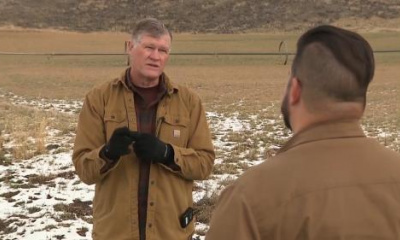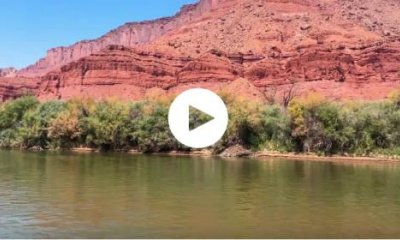SALT LAKE CITY — Utah water experts agree that Utahns must continue to make changes to how they consume water for communities to avoid consequences tied to the drying Great Salt Lake, which reached an all-time low last year.
Experts who attended a forum on the Great Salt Lake last week also acknowledge saving water is easier said than done, because water in the Great Salt Lake basin is allocated among water rights holders. This means more creative solutions may be introduced as the next legislative session approaches in January.
"We really have to start having a conversation of how we're going to get people to use that water differently and make sure that we can bring that water in some safe way," Brian Steed, Utah's Great Salt Lake commissioner, said during a webinar hosted by the League of Women Voters of Utah Thursday.
What could be considered next
The Great Salt Lake's decline in recent years poses serious environmental concerns, ranging from not being able to boost snowpack levels to large amounts of toxic lakebed dust blowing into communities near the lake's shore.
It could also threaten the future of businesses and industries that rely on the lake for mineral extraction, brine shrimp and outdoor recreation, costing billions in economic impact. All of these are why experts are worried about its future.
"We need to change our habits, our behaviors, our expectations, our lifestyles and our minds about how we do things," said Jan Striefel, former president of the League of Women Voters of Salt Lake. "It's a big task, but the people of Utah are really the only ones who can make these changes. It's basically on us."
Thursday's forum offered a partial look at what some of the creative solutions could be, as panelists discussed possible steps to save the ailing Great Salt Lake. Its southern arm is back down to 4,192.2 feet elevation, almost 6 feet below the lake's minimum healthy level.
Utah Sen. Nate Blouin, D-Salt Lake City, said there may be changes proposed for how mineral extraction companies, which use large amounts of water, consume water headed to the Great Salt Lake.
He also expects the state to look at hiring more water and energy staff to handle the growing need in those fields, as well as look at improvements to technology for water metering and tracking.
Improvements to the technology could help the state know whether water from rights either temporarily or permanently acquired by the Great Salt Lake Watershed Enhancement Trust go into the lake as intended, said Teresa Wilhelmsen, state engineer and director of the Utah Division of Water Rights.
Some of the first applications would send about 20,000 acre-feet to the lake, she adds. Steed estimates this concept has sent about 60,000 acres of water over the past few years, which he considers to be "a pretty good start."
He is required by law to file an "initial strategic plan" with Gov. Spencer Cox and the Utah Legislature by the end of November. This plan will likely dictate other possible solutions the Legislature could weigh during the 2024 legislative session, Blouin said.
Building on current strategies
Utah's projected population growth could cause more woes, which is why Steed said leaders must be "smarter with how we grow," in regard to future municipal water needs. However, agriculture uses still account for nearly 80% of all of the state's water consumption, the League of Women Voters of Utah found in a report the nonpartisan organization published in April.
Steed said strategies already in play, such as optimizing agricultural water, can provide "major savings," possibly putting an annual dent in the lake's massive deficit. He also tossed around the idea of tweaking the length of Utah's irrigation season, or possibly paying farmers and ranchers to reduce some crop yields, or skip watering some thirsty crops altogether during dry years, much like the federal government is exploring along the Colorado River.
"We need to consider (agriculture) as a part of the solution and not a part of the problem," he said, adding that fighting farmers over water may drive away much-needed collaboration.
But farmers may also be hesitant to agree to avoid growing some or all crops, even if they are paid for the temporary measure, Blouin warns. He referred to it as a "huge political ask," based on what he's heard from Wyoming farmers along the Colorado River basin.
Yet, as the lake continues to struggle, he notes something must be done to help Utah avoid the serious environmental concerns the drying Great Salt Lake poses. That's why he expects state lawmakers will continue to focus on the lake moving forward.
"We're already down a couple of feet and trending down toward that historical low, and we can't keep sitting there. It's not sustainable for the economy, for the bird populations, the brine shrimp and the flies and, of course, our public health," he said. "It's a problem we've got to solve and I hope we find the will to do it."








